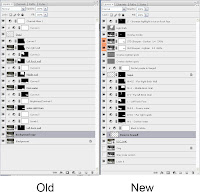While growing up here in Canada I always understood that the Inuit or Eskimo cultures, (which is really an aggregate name for many northern tribes) had a thousand names or more to describe snow. These native people whose very life depends upon understanding just how the snow will behave would definitely need an arsenal of names to describe their life force for survival.
It turns out, with some web research, that maybe there is not really that many words they use and that within the English language we may have a large abundance of phrases to describe our snow experience.
If there are so some many ways to describe snow, can we not as photographers capture images that in some ways also describe our contact with snow in divergent lights and moods?
When we think of snow we tend to think in terms of white and then whiter. But snow when shot at lower light setting can display some brilliant and vibrant colours that you would not normally associate with snow.
These images below are my first start with a list.
Black Golden Snow
f11,ISO 200. 1/500s
This was captured as the sun was nearing the horizon. With the faster shutter speed I am able to reduce the whiteness and find the subtle golden and copper colours on the river snowcap.
Multicoloured snow
f16, ISO 200, 1/125s
Ice of the Ottawa River had slightly meted and re-frozen and became windswept with new snow.
Blue Snow
f16,ISO 200. 1/100s
On winter days deep in the shadow can be found some beautiful deep blues.
Snow-capped
f5.3, ISO200, 1/600s
Newly fallen provides snowcaps for the red berries in the tree branches.
Clear hard melted snow (Ice)
The snow-plastered sign had slightly melted in the sun and then froze overnight to form the hanging icicle.
Snow Man
My wife and I lean against our freshly built Snowman. We did get help from others to roll the second ball on top.
sand-Snow with Tracks
f10, ISO200, 1/400s - increased ‘vibrance +78’ in ACR RAW
The snow in the image almost has the appearance of sand along a beach. The soft wind blown snow lines are broken up with the tracks of birds.
I hadn’t really thought of making a project out of exploring snow until I decided to select this as my topic.
Here are a few more words that might describe snow to some of us.
Dirty road snow
Slush
Falling snow
Blizzard
First snow
Corn snow
Angel Snow (where you make an angel in the snow)
Our description of common items provides many opportunities to capture and explore the many facets of how we see things and afford much material for great projects.
For those of you who are now enjoying summer, like those of you in Australia, New Zealand or warm climates, consider Sand as a project. We have sand storms, sand dunes, sandy beach, sandstone, sand sculptures, blowing sand, white, red and black sand and in-your-sandals sand. Since sand is not really as prevalent around here, maybe you have other terms that would reveal something about sand.
In follow-up to the the thousand words for snow I have provided a couple of links.
The Eskimos' Hundred Words for Snow (read preamble)
http://www.mendosa.com/snow.html
I can’t confirm if accurate but interesting article on words for snow
http://www.ecst.csuchico.edu/~atman/Misc/eskimo-snow-words.html
Niels Henriksen
A Photographer’s Adage
Remember... light is your crayon, and there's always another color in the box. - Tedric A. Garrison - This Quote taken from the Photo Class called: "Your Creative Edge", taught by Tedric A. Garrison















